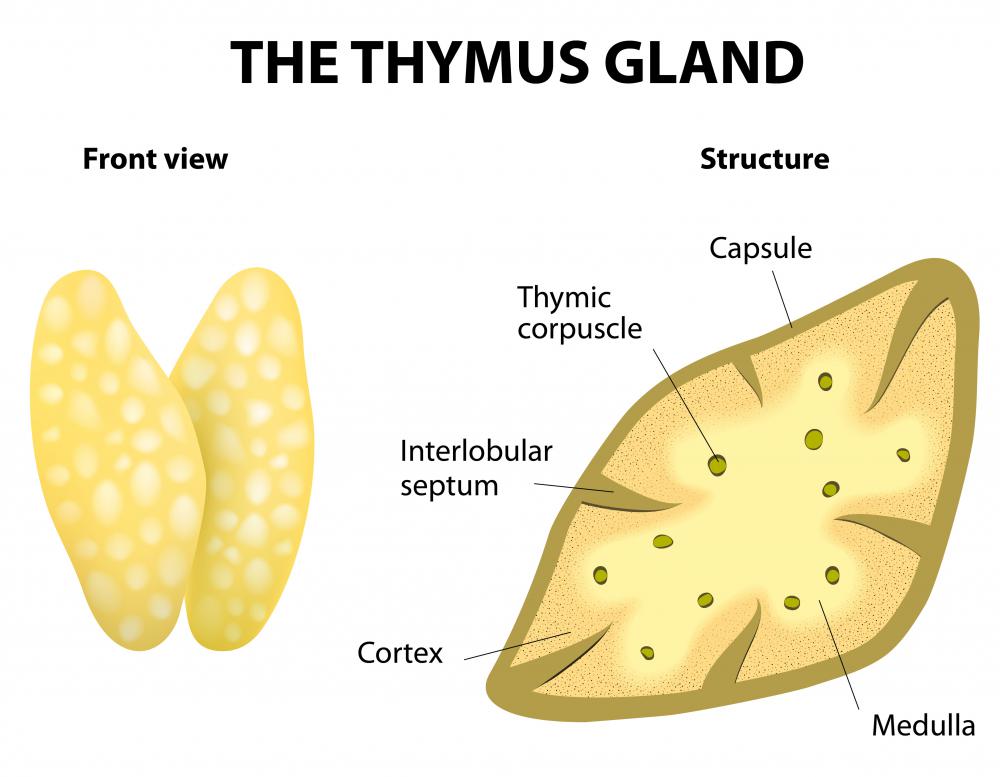At WiseGEEK, we're committed to delivering accurate, trustworthy information. Our expert-authored content is rigorously fact-checked and sourced from credible authorities. Discover how we uphold the highest standards in providing you with reliable knowledge.
What is Myasthenia Gravis?
Myasthenia gravis, which translates to grave muscle weakness, is an autoimmune condition that causes the voluntary muscles of the body to gradually weaken. Most often the muscles of the face, such as those that control the movement of the eyelids, speaking, and chewing, are first affected. These muscles may show involuntary movement or droopiness, or may make speaking or swallowing very difficult.
Myasthenia gravis is not inherited, though there have been some cases where there is more than one affected member of a family. Its advent is most common in women under the age of 40, and men over 60. The condition is primarily related to the thymus gland, which abnormally secretes immune cells that may attack the body’s nerve transmission signals and cut them off or distort them.

Symptoms progress from muscle weakness in the face to weakness in the extremities, which may affect movement range. Weakness is often exhibited most during activity. The most serious aspect of myasthenia gravis is its ability to cause a myasthenic crisis. During a crisis, the muscles that support breathing become too weak and those undergoing a crisis generally require emergency services and/or hospitalization to provide breathing assistance, such as with ventilators.

Methods for diagnosing myasthenia gravis are not perfect, and some with the condition can wait several years prior to receiving a positive diagnosis. Since these symptoms do not fail to go unnoticed, a physician will usually begin with taking a complete medical history. Physical examination may include the patient demonstrating the ability to grasp objects or move certain muscles. Sometimes blood tests can detect the presence of abnormal immune cells.

Two other tests that can possibly be performed are single fiber electromyography (EMG), and an edrophonium test. EMG tests single strands of muscles with electrical pulses to identify any damage of neural transmission to muscles. An edrophonium test uses intravenous administration of edrophonium to temporarily block the actions of immune cells. During the test, when symptoms of myasthenia gravis improve, this can be considered as a positive test.

Once diagnosed, there are several treatments for myasthenia gravis. In some cases, medications that block immune responses, specifically those autoimmune cells produced in the thymus are administered. These include daily doses of medications like neostigmine. Occasionally, steroids like prednisone are used to improve muscle strength, though these steroids can have extreme side effects.

When possible, a surgical procedure called a thymectomy removes the thymus gland. This is by far the most effective treatment for myasthenia gravis, with 70% of patients having complete remission of symptoms. Since this option does not completely eliminate the illness in some, continued research by the National Institute of Neurological Disorders and Stroke hopes to find both better treatments and ultimately a cure. For now, with current treatment, many with myasthenia gravis can be expected to live a healthy and normal life.
AS FEATURED ON:
AS FEATURED ON:



















Discussion Comments
Dose of Cellcept is 1500 mg daily and not 155 mg as typed earlier. sorry
I am diagnosed as a Musk Myasthenia patient. I had an attack in July 2006 and had to undergo plasmapheresis. I have been taking Cellcept for more than three years. I was told my thymus gland is OK. What is the cause of this disease and how long will I have to take this medicine? I am doing fine with 155mg dose of cellcept.
Post your comments